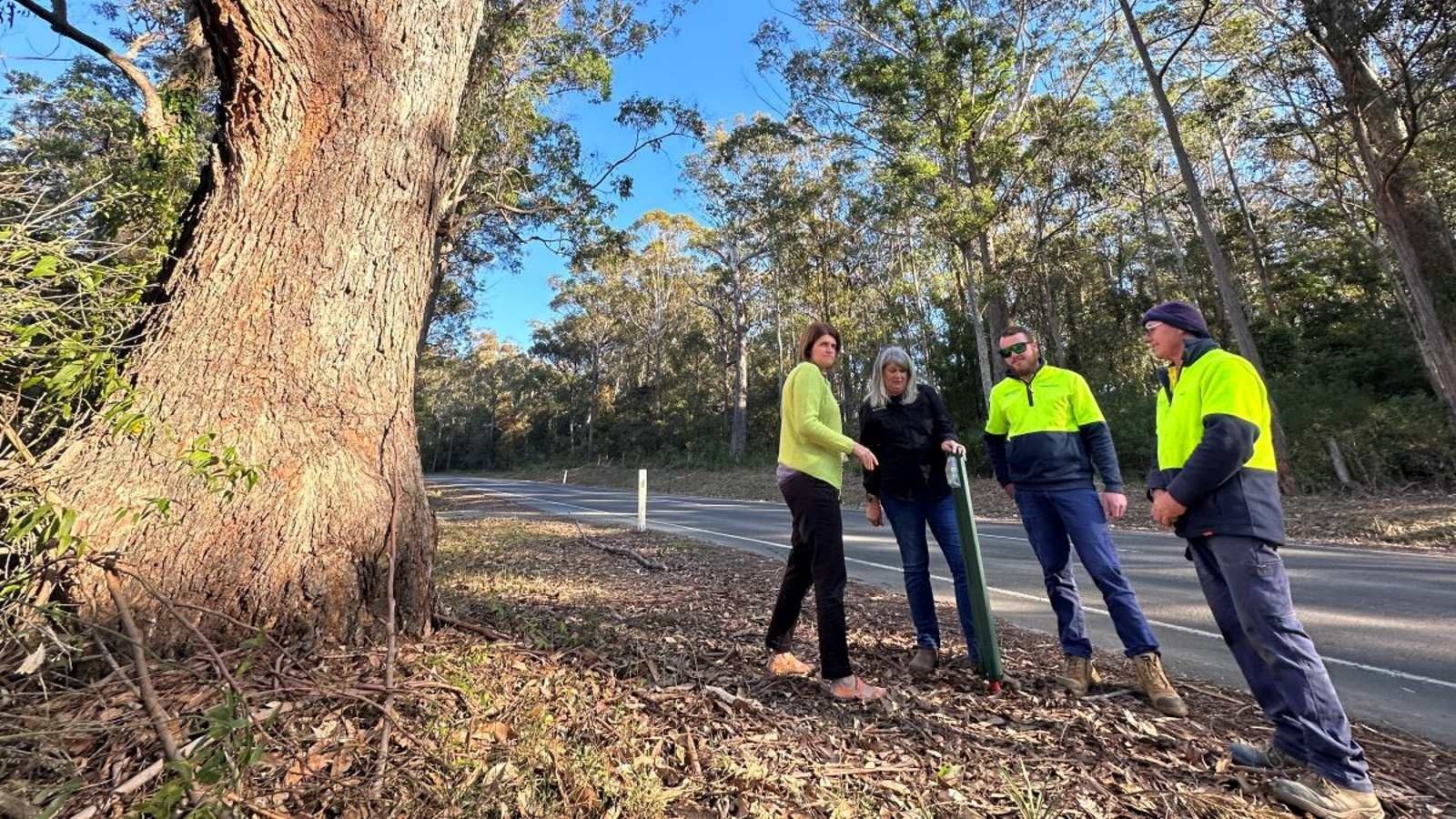Virtual fence pilot program
Council worked with local community environmental group, The Coastwatchers Association, and local wildlife rescue group, WIRES, to develop a virtual fence pilot program in Long Beach and Mogo.
A virtual fence is an active electronic protection system that alerts animals when a vehicle approaches, before they cross a road. The system is most effective between dusk and dawn.
The purpose of the program is to reduce wildlife being struck by travelling vehicles. As Council manages 1,100kms of roads in Eurobodalla, the consequences of wildlife strikes are significant. Before we installed the virtual fence at Long Beach, Council and WIRES volunteers attended up to five wildlife strikes a week. Since the virtual fence, there have only been five wildlife strikes in eight months.
About the program
Why we selected Long Beach for the first trial site
Roadkill records show that a 1.1km section of Cullendulla Drive, Long Beach is one of the area's most significant hotspots.
How the virtual fences work
A series of posts are spaced every 25m on alternating sides of the road. At the top of each post is a small device that emits an audible alarm and blue and yellow flashing strobe-type LED lights when struck by vehicle headlights at night.
As the vehicle passes, the devices are triggered in sequence by the vehicle headlights which forms a virtual fence. This deters animals like kangaroos, wallabies and wombats from crossing the road in search of food and shelter. The virtual fence is most effective when the speed limit is 80kms or less.
New virtual fence trial site
Council is working with The Coastwatchers Association and WIRES to develop a second virtual fence trial at another identified high strike location at Mogo. We will install the fence along Dunns Creek Road, and Tomakin Road, between Mogo and Tomakin. In just one week in June 2023, three wombats and three wallabies died at this location within five days.
So far, we've installed 1.8km of virtual fencing along Dunns Creek Road, and we'll install another 3km along this road.
We will also install a new 2.7km fence along Tomakin Road.
Total length of virtual fencing
The virtual fence pilot program involves 8.6 kms of fencing at these locations:
- 1.1km along Blairs Road and Cullendulla Drive, Long Beach
- 4.8kms along Dunns Creek Road, Woodlands
- 2.7km along Tomakin Road, Mogo.
Cost of the program and funding
The first virtual fence trial at Long Beach cost $11,531 to install. We received $10,000 of funding support from the Great Eastern Ranges and the World Wild Fund for Nature Australia.
Council and Coastwatchers received $57,000 of funding for the 5.7km of fencing at the second new trial site. Council is also contributing in-kind support to install and monitor the fencing.
Outcome of the program at Long Beach
After an eight-month trial period, the virtual fence installed at the trial site in Long Beach has significantly reduced the number of wildlife strikes by vehicles.
We have analysed the data, and it shows there has not been a migration of roadkill outside of the virtual fence area.
More information
- Wildlife Safety Solutions: Virtual fencing
- Eurobodalla Council: Report to Ordinary Meeting of Council - Pilot Program - Virtual Fencing (7.5 MB)
Contact us
If you need more information about our virtual fence pilot program, please contact Courtney Fink-Downes, Council's Natural Resource Supervisor:
- T: 4474 7493
- E: Courtney Fink-Downes

